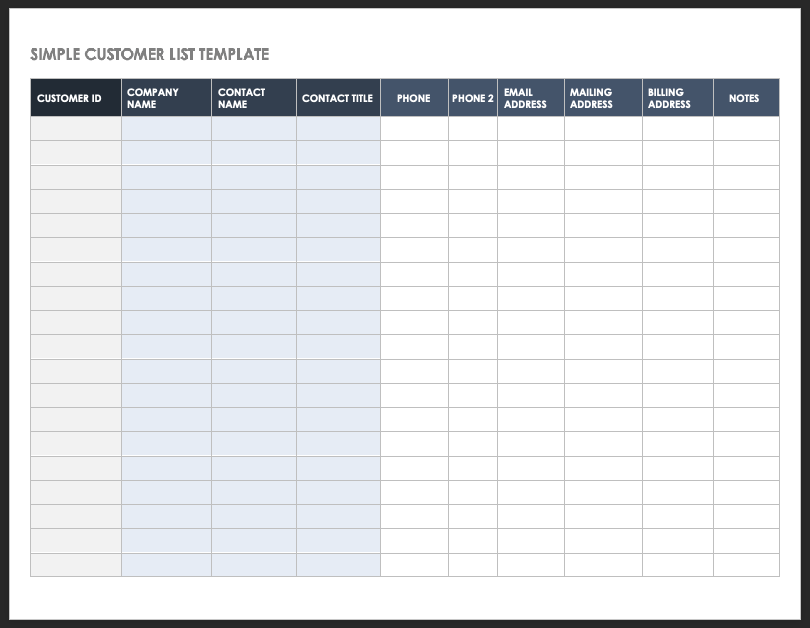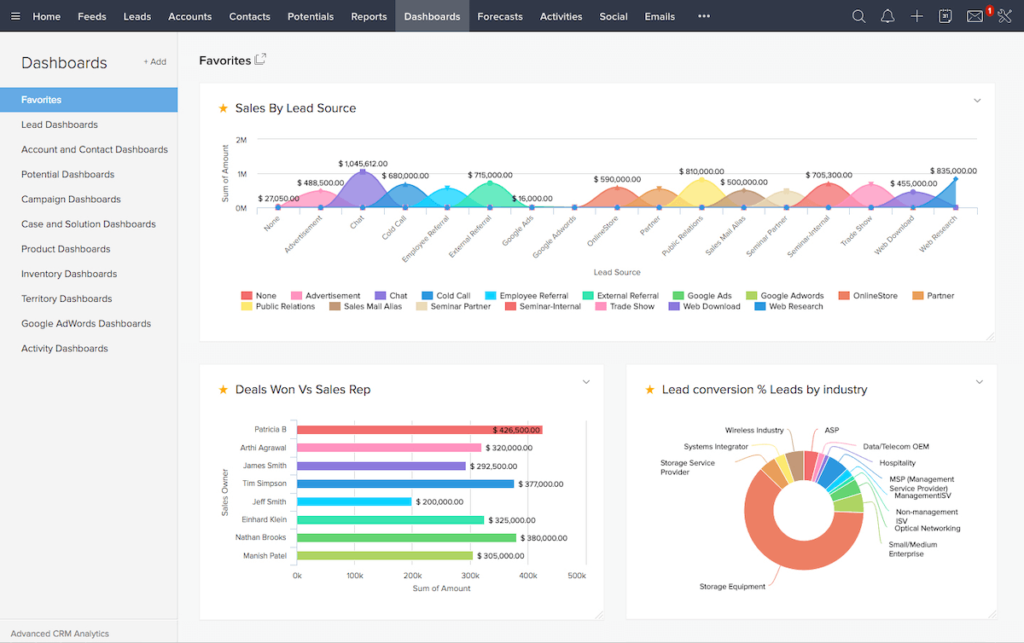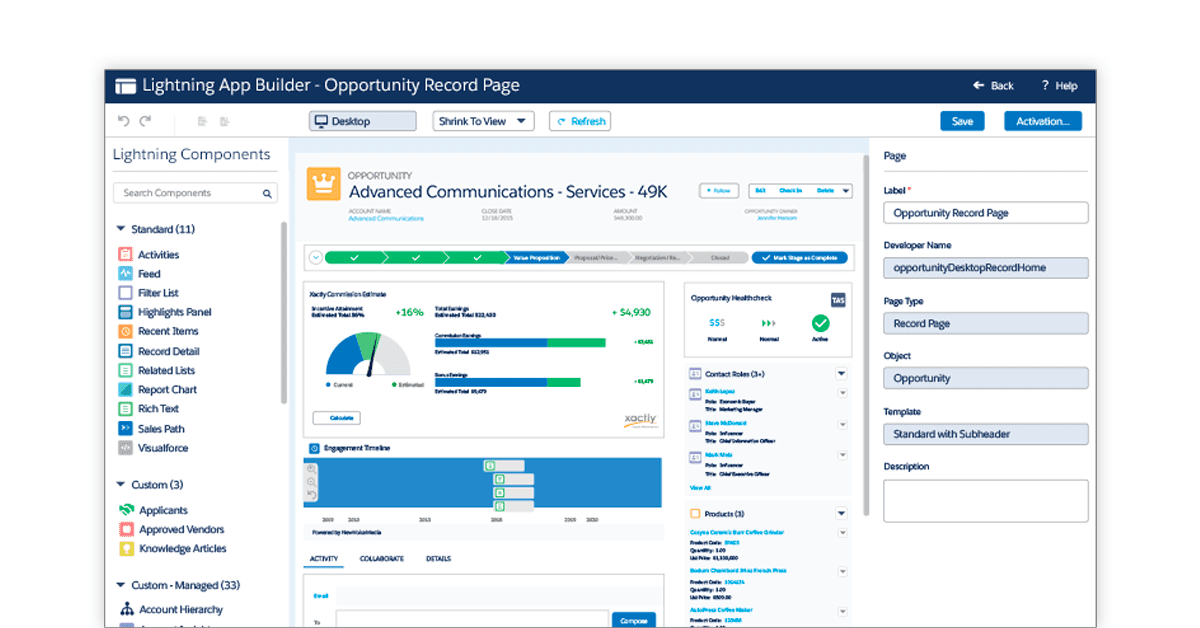
The Ultimate Small Business CRM Checklist: Your Guide to Choosing, Implementing, and Thriving
Starting and running a small business is an adventure, a rollercoaster, a thrilling ride filled with both exhilarating highs and challenging lows. One of the most critical tools for navigating this journey is a Customer Relationship Management (CRM) system. But with so many options available, choosing the right CRM can feel overwhelming. That’s where this comprehensive checklist comes in. We’ll break down everything you need to consider, from initial needs assessment to successful implementation and ongoing optimization, ensuring your small business CRM becomes a powerful engine for growth.
Why Your Small Business Needs a CRM
Before diving into the checklist, let’s quickly revisit why a CRM is so crucial for small businesses. In essence, a CRM system helps you manage and analyze customer interactions and data throughout the customer lifecycle, with the goal of improving business relationships, driving sales growth, and increasing customer retention. Think of it as the central nervous system of your customer interactions.
Here’s a glimpse of what a CRM can do for you:
- Centralized Customer Data: Store all customer information in one easily accessible place, eliminating scattered spreadsheets and email chains.
- Improved Communication: Track all interactions with customers, ensuring consistent and personalized communication.
- Enhanced Sales Efficiency: Automate tasks, streamline the sales process, and empower your sales team to close more deals.
- Better Customer Service: Provide faster, more efficient support, leading to higher customer satisfaction.
- Data-Driven Insights: Gain valuable insights into customer behavior, sales trends, and marketing effectiveness.
- Increased Revenue: By improving all of the above, a CRM ultimately helps you boost revenue and profitability.
The Small Business CRM Checklist: Your Step-by-Step Guide
This checklist is designed to guide you through the entire CRM process, from the initial planning stages to ongoing maintenance. Let’s get started!
I. Needs Assessment and Planning
Before you start shopping for a CRM, you need to understand your business needs. This is the foundation upon which your CRM success will be built.
- Define Your Business Goals: What are your primary objectives? Increase sales? Improve customer retention? Streamline marketing efforts? Clearly defined goals will guide your CRM selection.
- Identify Key Pain Points: What challenges are you currently facing in managing customer relationships? Are you losing track of leads? Struggling with follow-up? Pinpointing these issues will highlight the features you need in a CRM.
- Assess Your Current Processes: Map out your existing sales, marketing, and customer service processes. This will help you identify areas for improvement and how a CRM can support them.
- Determine Your Budget: CRM pricing varies widely. Set a realistic budget that considers software costs, implementation expenses, and ongoing maintenance. Remember to factor in training costs.
- Identify Your Team’s Needs: Involve your team in the planning process. Understand their daily tasks and how a CRM can help them be more efficient. Different departments (sales, marketing, customer service) will likely have different needs.
II. CRM Feature Requirements
Once you understand your needs, it’s time to identify the specific features your CRM must have.
- Contact Management: This is the core of any CRM. Ensure it can store and manage contact information, including names, addresses, phone numbers, email addresses, and social media profiles.
- Lead Management: The CRM should enable you to capture, track, and nurture leads through the sales pipeline. Look for features like lead scoring, lead assignment, and automated follow-up.
- Sales Automation: Automate repetitive sales tasks like email follow-ups, appointment scheduling, and task reminders.
- Sales Pipeline Management: Visualize your sales process and track deals through each stage of the pipeline.
- Reporting and Analytics: The CRM should provide robust reporting and analytics capabilities, allowing you to track key metrics like sales performance, customer acquisition cost, and customer lifetime value.
- Marketing Automation (Optional, but highly recommended): Integrate marketing automation features like email marketing, campaign management, and social media integration to nurture leads and improve marketing ROI.
- Customer Service and Support: If you offer customer support, look for features like a help desk, ticketing system, and knowledge base.
- Integration Capabilities: Ensure the CRM integrates with other tools you use, such as email marketing platforms, accounting software, and social media channels.
- Mobile Accessibility: In today’s mobile world, a CRM with a mobile app or mobile-friendly interface is essential for accessing data and managing customer interactions on the go.
- Security and Compliance: Prioritize security features like data encryption, access controls, and compliance with relevant regulations (e.g., GDPR, CCPA).
III. CRM Vendor Selection and Evaluation
Now comes the exciting part: choosing the right CRM vendor. This is where your research and evaluation skills come into play.
- Research CRM Vendors: Start by researching the top CRM vendors in the market. Read reviews, compare features, and narrow down your options. Some popular choices for small businesses include:
- HubSpot CRM: Free CRM with powerful features for sales and marketing.
- Zoho CRM: Affordable and feature-rich CRM with a wide range of integrations.
- Salesforce Sales Cloud: Powerful and scalable CRM, but can be more complex and expensive.
- Pipedrive: Sales-focused CRM with a visual pipeline and intuitive interface.
- Freshsales: User-friendly CRM with a focus on sales automation and communication.
- Compare Features and Pricing: Create a spreadsheet to compare the features, pricing, and limitations of each CRM on your shortlist.
- Read Reviews and Case Studies: See what other businesses are saying about each CRM. Look for reviews from companies similar to yours in size and industry.
- Request Demos: Schedule demos with your top choices to see the CRM in action and ask questions.
- Consider Scalability: Choose a CRM that can grow with your business. Make sure it can handle an increasing number of contacts, users, and data.
- Assess Ease of Use: The CRM should be user-friendly and intuitive. Consider the learning curve for your team.
- Evaluate Customer Support: Check the vendor’s customer support options, including documentation, online resources, and support channels.
- Free Trials: Take advantage of free trials to test the CRM and see if it’s a good fit for your business.
- Check Integration Capabilities: Ensure the CRM integrates with your existing tools and platforms.
IV. Implementation and Data Migration
Once you’ve chosen a CRM, it’s time to implement it. This process requires careful planning and execution.
- Develop an Implementation Plan: Outline the steps involved in the implementation process, including data migration, user training, and system configuration.
- Clean and Organize Your Data: Before migrating your data, clean and organize it to ensure accuracy and consistency. Remove duplicates, correct errors, and standardize formatting.
- Migrate Your Data: Import your data into the CRM. Most CRMs offer data import tools or integrations with data migration services.
- Customize Your CRM: Configure the CRM to meet your specific business needs. This may include customizing fields, creating workflows, and setting up user roles.
- Train Your Team: Provide comprehensive training to your team on how to use the CRM. Offer ongoing support and resources to help them become proficient.
- Test the System: Thoroughly test the CRM to ensure it’s working correctly and that your data is accurate.
- Go Live: Once you’ve tested the system, it’s time to launch it.
V. Ongoing Optimization and Maintenance
Implementing a CRM is just the beginning. Ongoing optimization and maintenance are essential for maximizing its value.
- Monitor Usage and Adoption: Track how your team is using the CRM and identify any areas where they may need additional training or support.
- Regularly Review and Update Data: Keep your data accurate and up-to-date by regularly reviewing and updating it.
- Analyze Performance Metrics: Track key metrics to measure the effectiveness of your CRM and identify areas for improvement.
- Refine Processes and Workflows: Continuously refine your sales, marketing, and customer service processes to improve efficiency and effectiveness.
- Stay Up-to-Date with New Features: CRM vendors regularly release new features and updates. Stay informed about these changes and implement them to take advantage of the latest capabilities.
- Provide Ongoing Training: Offer ongoing training to your team to ensure they are using the CRM effectively and staying up-to-date with new features and best practices.
- Seek Feedback: Gather feedback from your team on their experience with the CRM and use it to make improvements.
- Integrate with New Tools: Explore new integrations with other tools and platforms to enhance the functionality of your CRM.
Common CRM Mistakes to Avoid
Even with the best intentions, businesses can make mistakes when implementing and using a CRM. Here are some common pitfalls to avoid:
- Choosing the Wrong CRM: Selecting a CRM that doesn’t meet your needs or is too complex for your team.
- Poor Planning: Failing to define your goals, assess your needs, and develop a clear implementation plan.
- Inadequate Data Quality: Importing inaccurate, incomplete, or outdated data.
- Lack of User Adoption: Failing to train your team and encourage them to use the CRM effectively.
- Ignoring Customer Feedback: Not listening to customer feedback and using it to improve your processes.
- Not Leveraging Automation: Missing out on the benefits of automation by not setting up workflows and automated tasks.
- Failing to Integrate: Not integrating the CRM with other essential tools, leading to data silos and inefficiencies.
- Neglecting Ongoing Maintenance: Not regularly reviewing data, updating processes, and staying current with new features.
- Trying to Do Too Much Too Soon: Overcomplicating the implementation process by trying to implement too many features at once. Start with the basics and gradually add more functionality.
Real-World Examples of CRM Success
To illustrate the power of a well-implemented CRM, let’s look at a few examples of how small businesses have benefited:
- Increased Sales Conversions: A small consulting firm implemented a CRM to track leads and manage their sales pipeline. They automated follow-up emails and created a more structured sales process. As a result, their sales conversion rate increased by 20%.
- Improved Customer Retention: A local bakery used a CRM to track customer preferences and purchase history. They sent personalized birthday emails and offered exclusive discounts to loyal customers. This resulted in a 15% increase in customer retention.
- Enhanced Customer Service: A small software company implemented a CRM with a help desk and ticketing system. They were able to respond to customer inquiries faster and resolve issues more efficiently. This led to a significant increase in customer satisfaction.
- Streamlined Marketing Campaigns: A small e-commerce business used a CRM to segment their customer base and create targeted email marketing campaigns. They saw a 30% increase in click-through rates and a 10% increase in sales.
Conclusion: Your CRM Journey Begins Now
Implementing a CRM is a significant step towards building a successful small business. By following this checklist, you can choose the right CRM, implement it effectively, and optimize it for ongoing success. Remember, the CRM is not just a piece of software; it’s a strategic investment in your customer relationships and your business’s future. Start planning today, and get ready to transform the way you connect with your customers!
The journey to CRM success may seem daunting, but remember that it is a marathon, not a sprint. Take it one step at a time, and celebrate the small victories along the way. With careful planning, diligent execution, and a commitment to continuous improvement, your small business CRM will become an invaluable asset, empowering you to build stronger customer relationships, drive sales growth, and achieve your business goals.
Now go forth and conquer! Your customers are waiting.


